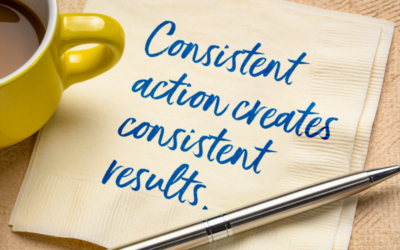No time to listen now? We'll send it to your inbox. No time to listen now? We'll send it to your inbox. or scroll down to get the highlightsI want to introduce you to Sarah Stenzhorn, who is one of the most steady,...

The stress free content plan that built a huge audience. Episode 190
No time to listen now? We'll send it to your inbox.
No time to listen now? We'll send it to your inbox.
or scroll down to get the highlights

Revolutionize Your E-Commerce Game: Melissa Davies’ Journey to Marketing Success
Have you ever found yourself staring at your bank account, wondering where all your hard-earned money went? We’ve all been there, scratching our heads and questioning if all that ad spend is worth it.
Let’s dive into the inspiring journey of Melissa Davies, the brilliant mind behind Bike Pretty, a collection of straw bike hats. She faced the challenge of skyrocketing marketing expenses but couldn’t afford to put a dent in her growth. What did she do? Melissa’s story is about to drop some serious wisdom on mastering the art of organic social media and slashing marketing costs (without compromising growth.)
Read on to get the details, click to listen to the episode
The Shocking Reality Check: Calculating Cost of Customer Acquisition
Melissa, a seasoned business owner, recently attended a mastermind session with Susan Bradley. The topic on the table – the elusive Cost of Customer Acquisition. Now, Melissa had been running her business for nearly a decade without ever crunching these numbers. Susan dropped a formula, Melissa plugged in the digits, and BAM…the cost was through the roof.
Sales were happening, but the advertising expenses were draining Melissa’s bank account as soon as funds came in. Melissa knew she had to fix the hole in the bucket, fast.
Setting the Goal: Slashing Marketing Expenses Without Sacrificing Growth
Melissa took a step back, surveyed her financial landscape, and set a formidable goal – cutting marketing expenses from 30% of revenue down to a lean and mean 10%. That’s not an easy feat, especially when your customers aren’t frequent flyers (Melissa’s customers either don’t purchase from her again, or purchase years later.)
Melissa set herself a specific target. She wanted to bring her marketing spend down to 10% of revenue. Ambitious? Maybe. Achievable? Melissa was determined to find out.
The Formulaic Approach to Organic Social Media: Melissa’s Three-Step Strategy
Now, here comes the magic – Melissa decided to pivot to organic social media (cue the collective gasps.) Organic social media? Isn’t organic reach dead?
But Melissa cracked the code and made it formulaic. She let go of the grand visions of a perfect social media world and embraced a structured approach.

Here are the three game-changing steps she took:
Step 1: Calling to Account – Tracking Every Marketing Dollar
Melissa got down to business and meticulously tracked every penny she spent on marketing. No more setting and forgetting ads on platforms like Facebook, Google, and Etsy. A simple spreadsheet became her best friend, helping her monitor weekly expenditures on various channels.
Why? Because those seemingly insignificant recurring spends can pile up, and before you know it, your hard-earned cash is disappearing into the void. Melissa took control. It’s not about throwing your money at Facebook or Google and praying they put it to good use; it’s about being the captain of your financial ship.
Step 2: Embracing Organic Social Media with a 30-Day Audience Booster
Melissa didn’t have a mint to throw at ads. Instead, she revisited an old friend – a Social Sales Girls training module called the 30-Day Audience Booster (available to Inner Circle members, you can learn more HERE. This training, curated by Susan Bradley and Patricia Manso, gave her a clear plan for daily posts on social media.
The goal? Three posts a day, and not just any posts. These were engagement posts designed to make people happy, inspire them, and build a community. Melissa didn’t have a massive following initially, but she leveraged the power of consistent posting. Silly memes, relatable jokes – she started with one post a day and worked her way up.

THE 30-DAY AUDIENCE BOOSTER FORMULA
Commit to posting 3 times every day. You’ll post 3 types of content:
- Post an “inspirational” or “proof” post, that your audience is likely to engage with by “reacting, commenting, or sharing”
- Post 2 product posts, and tag the products in your posts.
- Share your posts to stories daily (and link product Stories to your products)
Step 3: Layering in Product Posts and Inspiration
Melissa was keeping her followers entertained, but likes don’t pay the bills. She knew she had to seamlessly integrate product posts into the mix– the dreaded “selling” posts. But she had a trick up her sleeve. Instead of judging these posts by likes or comments, she focused on link clicks – the golden ticket to organic traffic.
As she gained confidence, Melissa added another layer – inspiration posts. These weren’t just about selling; they were about creating a brand, a community. Beautiful bike tours, historical snippets, and fashionable outfits became the foundation of her fantasy bike lands.
A Stress-Free Content Batching Strategy
Melissa doesn’t have time to post 3x a day on the fly, so she started batching her content and planning everything out 28 days ahead of time. She dedicates about half a day each week to scheduling content, following the Audience Booster template. This was a lot of work up front, but as time went on she started using her analytics to see what worked best, and repeated those high-performing posts.

The Results: Melissa’s Triumph Over Marketing Costs
Ready for the results? Drumroll, please. Melissa not only achieved her goal of reducing marketing expenses to 12% of revenue, she decreased her cost of customer acquisition by almost half. Her ad spend is down 75% (saving her $21k+ per year) and her organic reach has increased 1,450%. The bottom line–Melissa took control of her marketing narrative. She turned the tables on those sneaky expenses, embraced the power of organic social media, and transformed her e-commerce game.
To re-cap
- Batch creating and scheduling content saves time and stress
- Reposting and repurposing existing content eliminates the need to constantly create new material
- Shift your mindset: treating social media as a volume game keeps you from getting bogged down by perfectionism or hesitation.
Your Turn
We asked Melissa what is the #1 piece of advice she would give to store owners hoping to get results like hers. Her answer was hands down the Inner Circle training “Build Your Funnel,” which is an exercise she does each month. She says it gives her a snapshot of where she is so that she knows what content she needs to make next.
So…what’s stopping you from taking the reins of your marketing destiny? Melissa’s story is a testament to the impact of a formulaic and strategic approach to organic social media.
Dive into your numbers, embrace the 30-Day Audience Booster, and start posting with purpose. Melissa Davies’ success story is your invitation to get organized with your social posting. The struggle is real, but so are the opportunities!
Related Links:
See Melissa’s website here: https://bikepretty.com/
Get Social Media Made Easy: https://classroom.thesocialsalesgirls.com/offers/PtLkpup2/checkout
Do You Even Know What It Costs To Get A New Customer?
https://thesocialsalesgirls.com/do-you-even-know-what-it-costs-to-get-a-new-customer-episode-187/
The Best Strategy For Organic Growth
https://thesocialsalesgirls.com/the-best-strategy-for-organic-growth-episode-119/
Organic Results That Will Shock You
https://thesocialsalesgirls.com/a-year-of-results-that-will-shock-you-episode-120/
Skyrocket Your Store’s Visibility
https://thesocialsalesgirls.com/skyrocket-your-stores-visibility-episode-129/
Build a massive audience with a brand Video
https://thesocialsalesgirls.com/build-a-massive-audience-with-a-brand-video-episode-162/
The TikTok Strategy That Exploded Sylvie’s Sales
https://thesocialsalesgirls.com/the-tiktok-strategy-that-exploded-sylvies-sales-episode-106/
How long will it take to reach your goals? Episode 203
We’re Getting Consistent Revenue Now. Episode 202
No time to listen now? We'll send it to your inbox. No time to listen now? We'll send it to your inbox. or scroll down to get the highlightsConsistent Revenue Now Last summer I spoke with Danielle Beauregard, owner of...
Make your business run without you. Here’s how. Episode 201
No time to listen now? We'll send it to your inbox. No time to listen now? We'll send it to your inbox. or scroll down to get the highlightsMake Sales In Your Jammies: Meet Sam Have you ever dreamed of making money...








